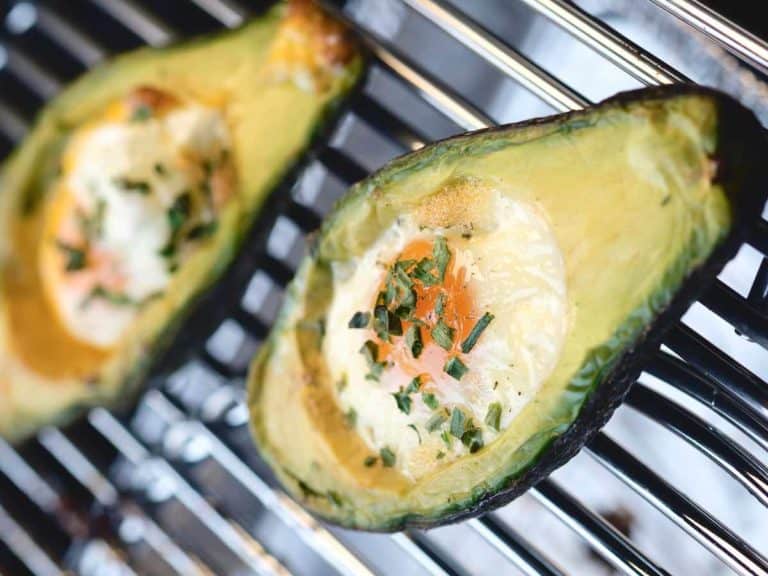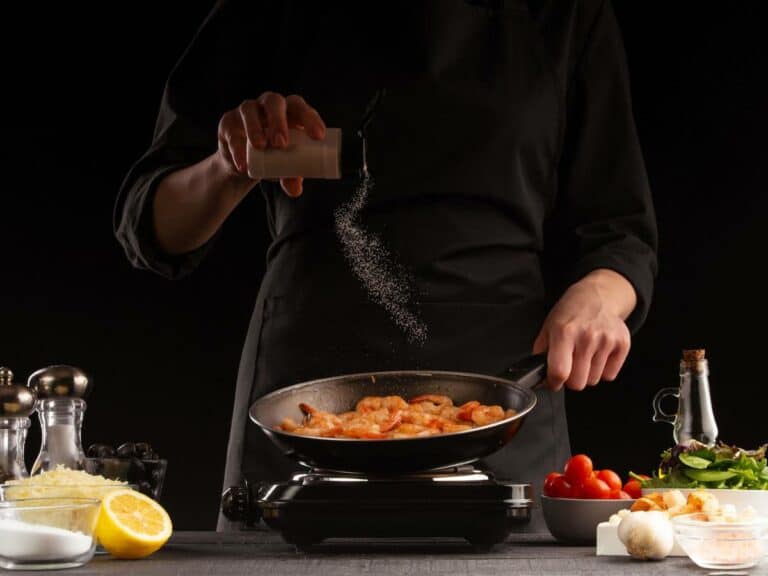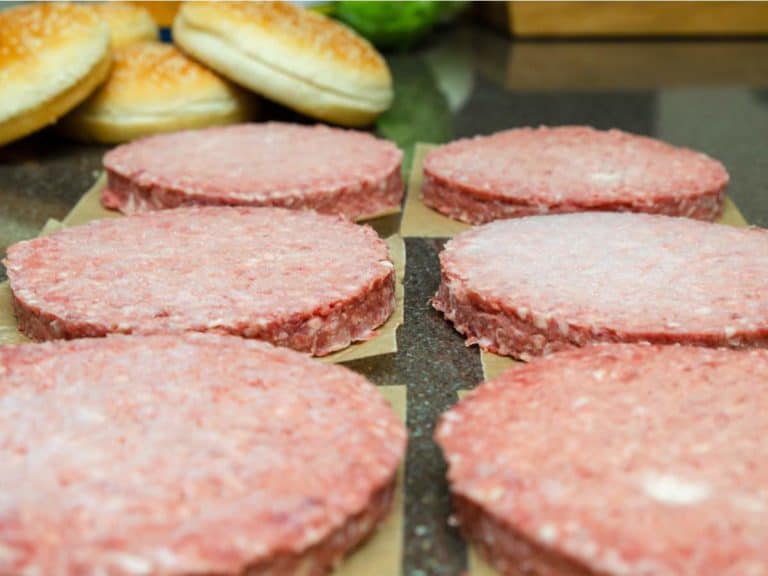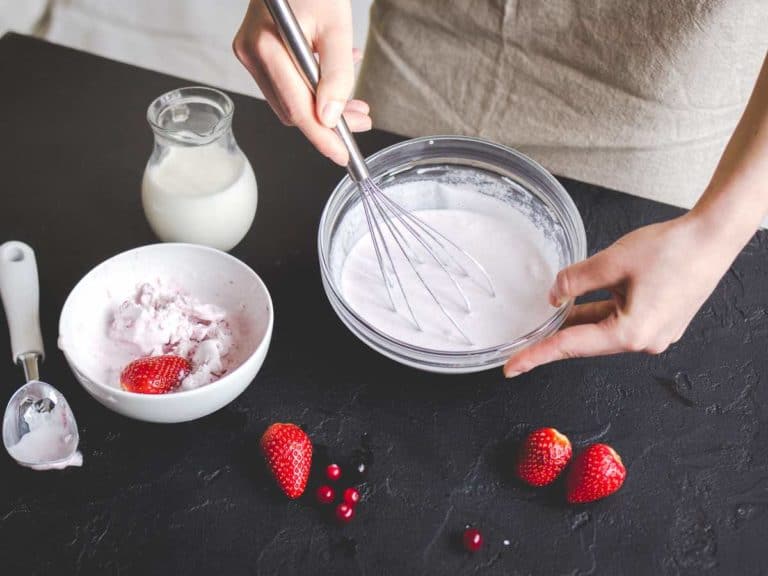Does Water Boil Faster With A Lid – Definitive Answer
Boiling water is one of the first cooking techniques you may learn at home. It gives way to the world of pasta, grains, and potatoes. It can turn raw eggs hard, soften raw veggies, and makes tomatoes yield their skin. However, boiling water takes time, and a lot of us are impatient. So, many people have tried various ways to hasten the boiling process, and one tip is covering it.
In our test, 4 cups (1L) of water boiled in 5 min 30 sec without lid, and in 5 min with the lid, or 10% faster. The water boils faster when the pot is covered because the air in the pan heats up, circulates back into the water, and speeds up the process.
But as essential as boiling is, it’s steeped in a good bit of myth and folklore.
Some work, and some don’t. Here, I will break down the best ways to boil water faster so that the next time you need to make pasta or boil a potato, you don’t have to wait long.
Myths And Facts About Boiling Water

Myth: Cold water boils faster than hot water
During high school days in your science experiment, you have been taught this theory. After all, hot water vaporizes in cold air, so is the opposite true in some form?
The answer is no.
The water needs to heat at 212 degrees Fahrenheit, no matter what the starting point is. It will not heat faster if it starts lower, so cold water does not boil faster than a warm one.
Myth: Salted water boils faster
Salted water has a higher boiling point than normal water, while many people think the common seasoning can lower the boiling temp. However, you’re not going to get the water salty enough with just a sprinkle of Kosher salt to change about the water’s boiling point in either direction.
You still need to season your water, especially if you plan to use it for cooking pasta and thickening the sauce or soup base. Just wait to add that salt to the water once it boils; otherwise, it could damage your pan.
Myth: Adding baking soda will hasten the boiling process of water
Baking soda is a wonderful ingredient, especially in baking. It can make cookies, bread, and cakes rise beautifully. It can also get your chicken sparkling clean, but despite that classic old myth, adding baking soda to water will not make it boil faster.
Fact: The thinner the water level, the faster it will boil
Make the water as shallow as possible when boiling water. It is because the greater amount of surface area exposes more water to the pan’s bottom, which is considered the hottest part of the pan.
Obviously, you cannot boil a lot of food in a wide, shallow pool of water, so use this tip when boiling raw veggies, such as asparagus, carrots, broccoli, as well as eggs, and chicken breast.
Fact: Hot water boils faster
The water will heat faster if it starts higher. If you’re in a hurry, turn your tap to the hottest setting, and then fill your pot with hot tap water. It helps in reaching the boiling point a bit faster than cold or lukewarm water.
You can also get the water even hotter by using a kettle. Start the process by bringing water much closer to the boiling point than your tap water will get. When you think it’s already hot, pour the water into the pot, and continue heating until it is boiling. It will lessen several minutes of your total boiling time.
Fact: Use less water in the pan
You may be used to turning on the tap and allowing the water to just rise in the pot.
But, if you are more precise with how much water you really need, you can boil the water faster. If you are making pasta for two, boiling a handful of eggs, or blanching carrots, you can use a smaller saucepan. You can save the big pot for later use, such as cooking shrimp or big batches of potatoes.
Personally, I use a 3-quart soup pot with a lid to boil pasta, cook oatmeal, warm soup, so you can use this instead of utilizing your other bigger pots.
The size is just right to boil water faster, and it is easier to handle when pouring and stirring. Larger pasta, like lasagna noodles, needs a bigger stockpot. Meanwhile, short noodles and broken strands fit and cook perfectly in this pot.

Fact: Keeping the pot covered
A watched pot will not boil, or it will but will let you feel that the time is ticking slowly and wasting your time. One great tip to boil the water faster in a casserole is to cover it. The air in the pan heats up as the water heats up. Then, it will circulate back into the water as it is heated. This helps bring the water to 212 degrees Fahrenheit faster.
If your pot or pan does not come with its own cover, you may check this universal lid on Amazon. These lids are designed to provide a snug fit and keep the hot air in.
I tested this myself.
I filled the pot with cold water, once with the lid and once without the lid. In both cases, I cooled down the pot first and used 4 cups (approximately 1L) of water.
As a result of the experiment, I found that the covered pot heats water faster – 5 minutes instead 5 minutes and 30 seconds uncovered.
Fact: The higher the elevations, the faster the water will reach the boiling time
For those who live at sea level, you’ll have to suffer knowing that living in parts of Colorado, Utah, New Mexico, and other states with tall mountain ranges can boil water faster under where they live. In higher places, the lower the air pressure, the faster the water will boil.
In cities with around 10,000 feet in elevation, the boiling point is a chilly 194 degrees Fahrenheit. At 8750 feet, it is slightly warmer at 195.5 degrees. Obviously, you can’t do anything to affect your city’s elevation.
You’ll experience this if you ever find yourself cooking in Los Alamos, N.M., wherein the boiling point is about 200 degrees Fahrenheit.
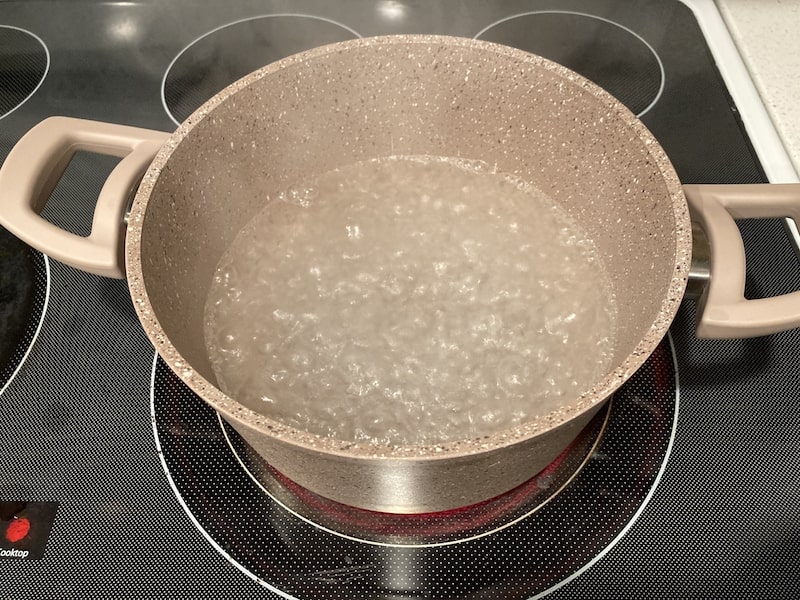
How To Boil Water Faster?
Here are some tips on how to speed the boiling of water:
- Use a wider, shallower pot instead of a tall and narrow one. The increase in surface area allows the water to heat up faster. Moreover, the use of a thinner pot will also boil water quicker than a thicker one.
- Start with hot water. When boiling water, fill your pot with hot tap water instead of cold. It will give you a great kick-off and get you to reach the boiling stage faster, for about 1 1/2 to 2 minutes. Well, it still depends on the amount of water you place in your pot.
NOTE: This tip is not highly recommended in homes installed with older pipes since the hot water can leach the lead and other stuff into the water. The choice is up to you.
- Use the amount of water that you really need. For example, if you’re just boiling a few eggs or potatoes, you don’t need to use a large stockpot. Many vegetables taste and look better when steamed with an inch or two of water in the pan instead of subjecting them to a full boil.
- Cover your pot. This technique traps the heat, which then speeds up the boiling process. You may use a plate just in case your pot does not come with a lid.
- Reuse your boiled water. You can blanch some veggies in the pasta water after you are done separating the pasta. You can also use it for cooking some eggs for tomorrow’s breakfast. Since the water is still hot, you might as well take advantage of it before it gets cold.
This last tip may not be beneficial for anyone residing at sea level, but it’s still good to know. For your information, at sea level, the water boils at 212°F. However, the higher you go in elevation, the lower the boiling point will be, thus reducing the time it will take to boil water.
